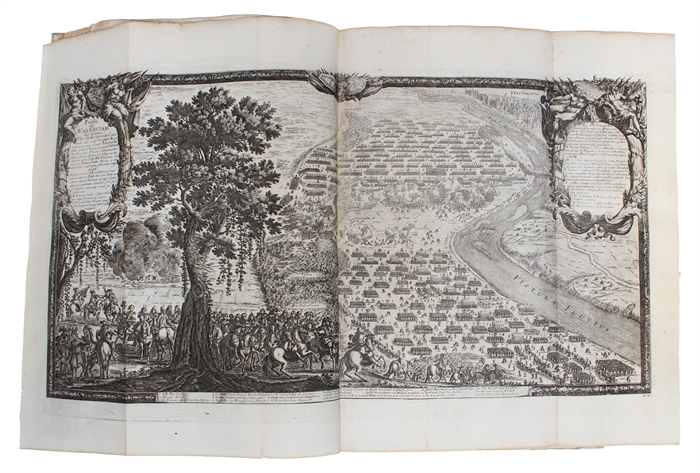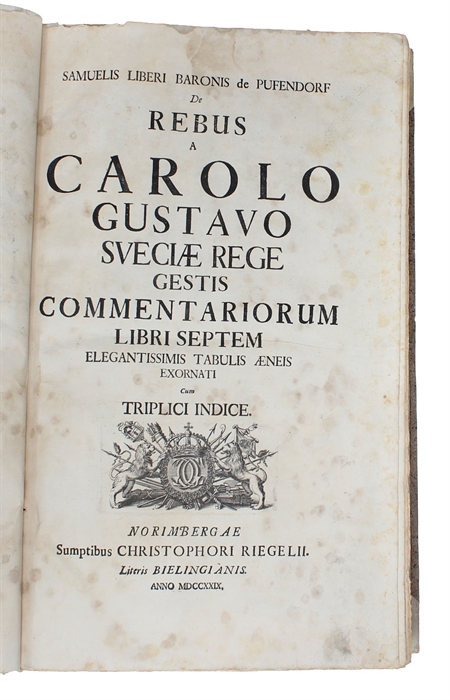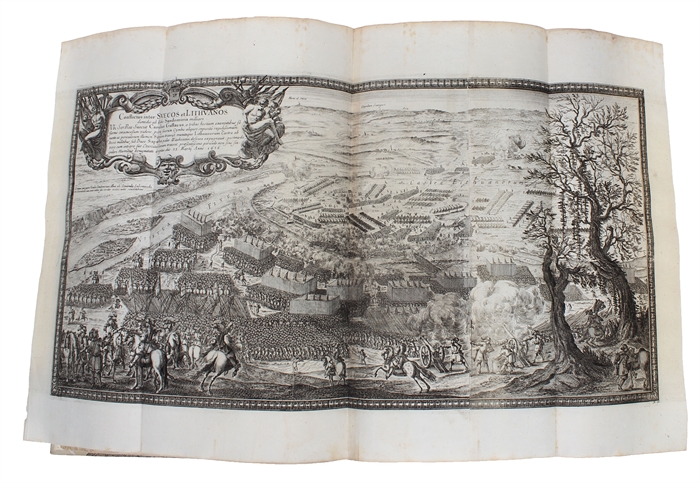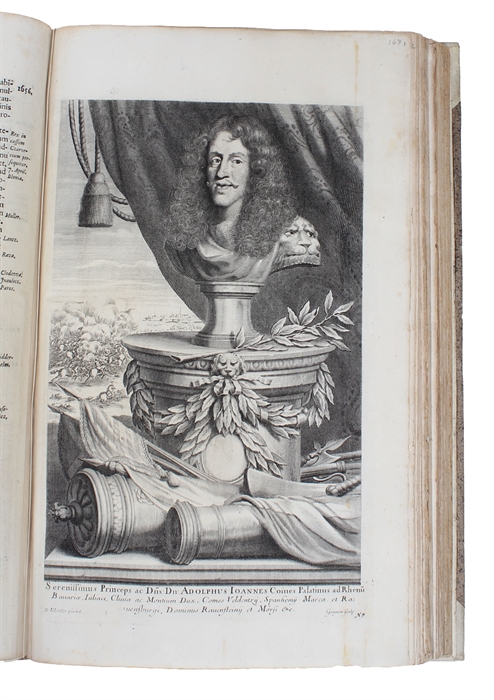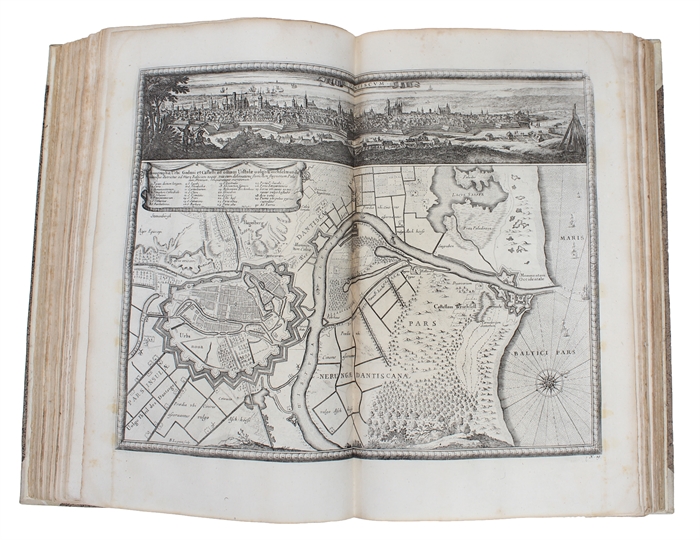THE MAGNIFICENT ILLUSTRATION OF THE SWEDISH WARS 1655-60
PUFENDORF, SAMUEL.
De Rebus a Carolo Gustavo Sveciae Rege Gestis commentariorum libri septem. Elegantissimis Tabulis aeneis exornati cum triplici Indice. (2 Parts).
Nürnberg, Christopher Riegel, 1729. Folio. (38x25 cm.). Bound in two unifrom later half vellum with handwritten titles and line bands on spine, all in black ink. Bound partly uncut. Half-title, (8), 362, (363-367), 368-626 pp. + Tractatus Praecipui 53 pp. + Index (9) pp. + Informatio pro Bibliopegis &c (2) pp. Engraved allegorical frontispiece (by Jean Boulanger after D.K. Ehrenstrahl). 12 engraved portraits and 115 fine engraved plates (numbered up to 112, some numbers omitted, some unnumbered, some double-numb - COMPLETE).
Plates are double-page, but some of the plates folded three times and made from more than one copperplate; the plate with the view of Stockholm, showing the procession of the funeral of Carl X Gustav, is printed from 13 plates and is 450 cm. long. One plate (Expeditio Gloriosa... qua Mare Balticum) shaved in left and right margins, loosing part of the printed frame. Many engraved vignettes, coins and medals in the text.
Although the binding is rather new, it is the copy's first binding, thus the first and last few leaves in both volumes have some brownspots and some soiling, otherwise rather clean with some scattered brownspots, mainly to margins. A few corners with minor repairs (no loss). 7 plates in part I having a wormtract in upper right corners, not affecting the engravings.
Scarce second Latin edition - the first published 1696 - having the same plates as the first, of this magnificent and profusely illustrated work on the Swedish Wars, which also appeared in translations into German and French.
The writing of this official history of the Swedish Wars with Poland and Denmark from 1655 to 1660 was entrusted by King Charles XI to Samuel Pufendorf, the famous and important German jurist, political philosopher, economist, statesman and historian, who was made a baron in 1694, shortly before he died. Pufendorf played a decisive role in the development of the philosophy of law and political history. His famous work on the Swedish Wars is also famed for its impressive and excellent illustrations, - not least the 450 cm. long procession-plate.
To illustrate the history of the Swedish Wars, use was made of the original drawings by Erik Dahlberg, the Quarter-Master general of the Swedish Army, who was an eye-witness. The drawings were engraved by the same artists that Dahlbergh employed in Paris and later in Sweden for his "Suecia Antiqua", e.g. Boulanger, Cochin, Jean le Pautre, Perelle etc. etc. They includes views from Poland, Denmark, Germany and Norway. It is easy to trace the influence of Callot, as well as of Rubens in these splendid Cavalry scenes.
Swedish Books No 38 - Warmholtz: 4840 (1696-edition).
Order-nr.: 54188

